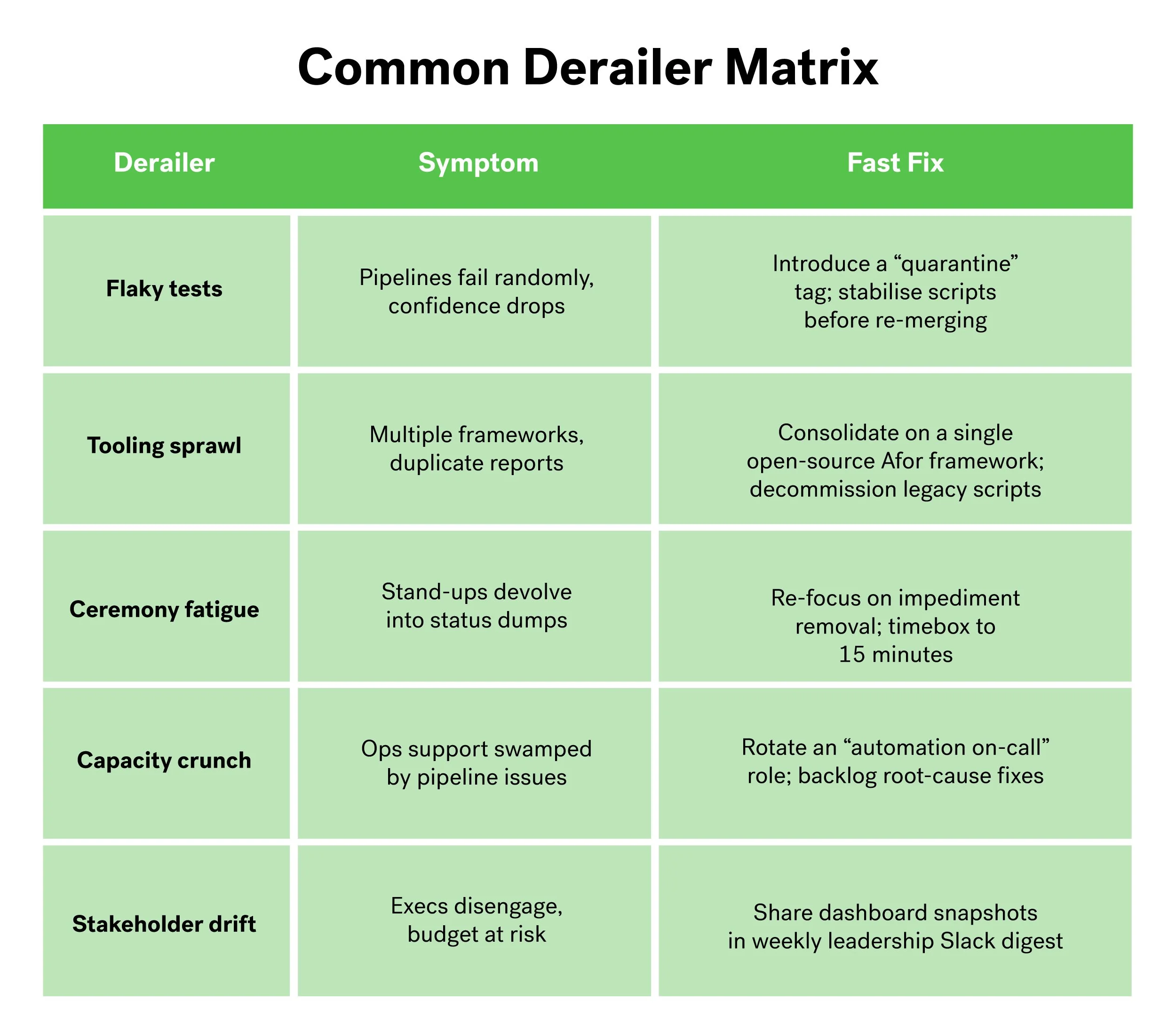2.5: The First 90 Days – Locking in Wins and Scaling Your New Test & Release Capability
Outline
Day 0-14: Establish baselines, install dashboards, secure quick-win automation candidates
Day 15-45: Expand coverage, embed release-train ceremonies, formalise knowledge transfer
Day 46-90: KPI review, backlog reprioritisation, roadmap for next wave of squads
Common derailers and how to course-correct
Long-term governance – quarterly business reviews and continuous value tracking
Introduction
Travelling and tracking the journey according to a clearly planned route will aid in ensuring success for all stakeholders, not to mention aiding in managing expectations when things don’t go according to plan.
Congratulations, the ink is dry – now the real work begins.
You have a signed Statement of Work, a green-lit budget, and sky-high expectations.
The next 90 days will determine whether your new Software Test Management and Release Engineering capability becomes a lighthouse success or another shelf-ware statistic.
Follow this day-by-day agenda, grounded in Afor’s proven delivery playbook, to convert contractual intent into measurable business value.
Day 0-14 – Baseline, Instrument, Win Fast
1. Capture the “before” picture
Benchmark current release cadence, defect escape rate, mean time to recover (MTTR), and test-coverage depth. This baseline is your future ROI proof-point.
2. Wire up visible dashboards
Integrate pipeline telemetry into a single release-readiness view inside your CI/CD toolchain. Real-time red/green signals focus squads on the metrics that matter.
3. Hunt for quick-win automation candidates
Triage the regression suite for high-frequency, high-value scenarios that are still manual. Converting even 20 tests can claw back dozens of engineer hours per sprint and showcase immediate impact.
4. Secure delivery champions
Nominate a Release-Train Manager and an Automation Architect as twin anchors. Their job: remove blockers, enforce ceremonies, and communicate value upwards.
Day 15-45 – Expand, Embed, Educate
1. Scale coverage without fragility
Extend the automation framework across APIs, UI paths, and data-layer validations. Prioritise resilient locator strategies and data-driven patterns to avoid flaky failures.
2. Institutionalise release-train ceremonies
Stand-up a fortnightly release-train increment (RTI) calendar: Plan, Build, Validate, Go/No-Go. Consistent cadence breeds predictability and stakeholder trust.
3. Formalise knowledge transfer
Pair internal testers with Afor engineers in mob-session walkthroughs. Record playbook videos and store them in a searchable wiki. By week 6 you should see internal staff triggering automated pipelines independently.
4. Publicise early wins
Share metrics: “UAT cycle 30 per cent faster, production defects cut in half.” Concrete evidence sustains executive sponsorship and keeps transformation momentum high
Day 46-90 – Review, Reprioritise, Roadmap
1. KPI deep-dive
Compare fresh performance data against the Day 0 baseline. Celebrate gains and spotlight gaps. Typical targets: regression runtime < 4 hours, escaped-defect rate < 1 per release.
2. Rebalance the backlog
Retire brittle scripts, add exploratory test charters, and queue technical-debt stories uncovered by new telemetry. Align backlog items with business OKRs to keep quality work financed.
3. Plot the next wave of squads
Use the “automation readiness score” to stage additional product teams onto the release-train. Afor’s clients often double their automated-coverage footprint across the second 90-day block once early learnings crystallise.
Common Derailers – And How to Course-Correct
Long-Term Governance – Sustaining the Win
1. Quarterly business reviews
Correlate quality metrics with customer-satisfaction scores and revenue impact. Keep quality visible as a growth lever, not a cost line.
2. Continuous-value tracking
Embed test metrics in corporate OKR tooling so gains survive leadership changes.
3. Capability uplift paths
Move from “Afor-led” to “Afor-advised” by certifying internal engineers on the framework and rotating them through squad consultancies.
4. Innovation sprints
Allocate one sprint per quarter for exploratory tooling upgrades – AI-powered test-case generation, synthetic data services, or shift-right canary validation. Staying current prevents entropy.
Next Steps
Book a complimentary 30-minute roadmap session with an Afor Automation Architect to tailor these milestones to your environment.
Partner with Afor to establish the test and release foundation your business can trust
FAQs - Further reading on how to build capability in Software Test and Release Management
Blog 1: Quality Debt – The Silent Killer Behind Your Release Velocity
Blog 3: What Business Criteria should I use when Shortlisting Test and Release Partners?
Blog 4: From Pilot to Production – Crafting a Risk‑Proof Statement of Work
Blog 5: The First 90 Days – Locking in Wins and Scaling Your New Test & Release Capability


